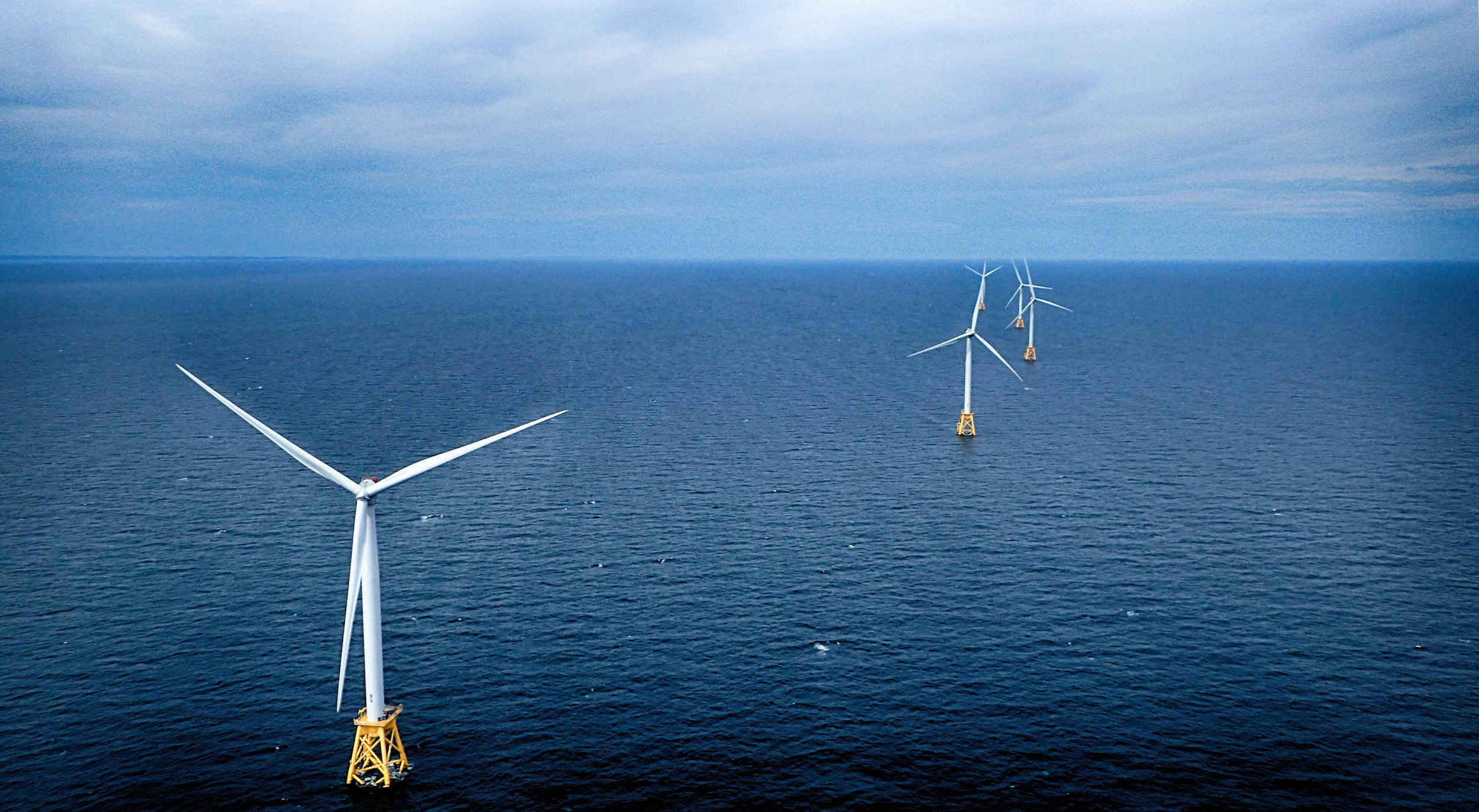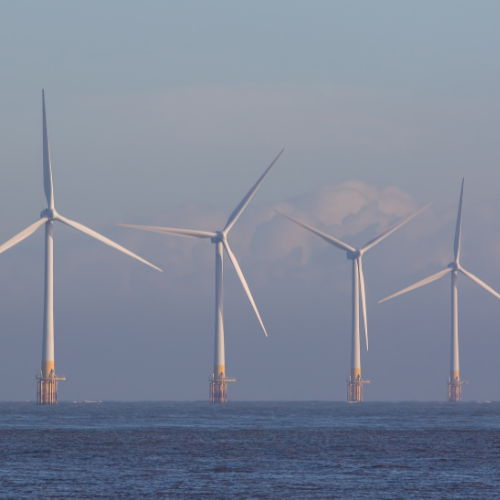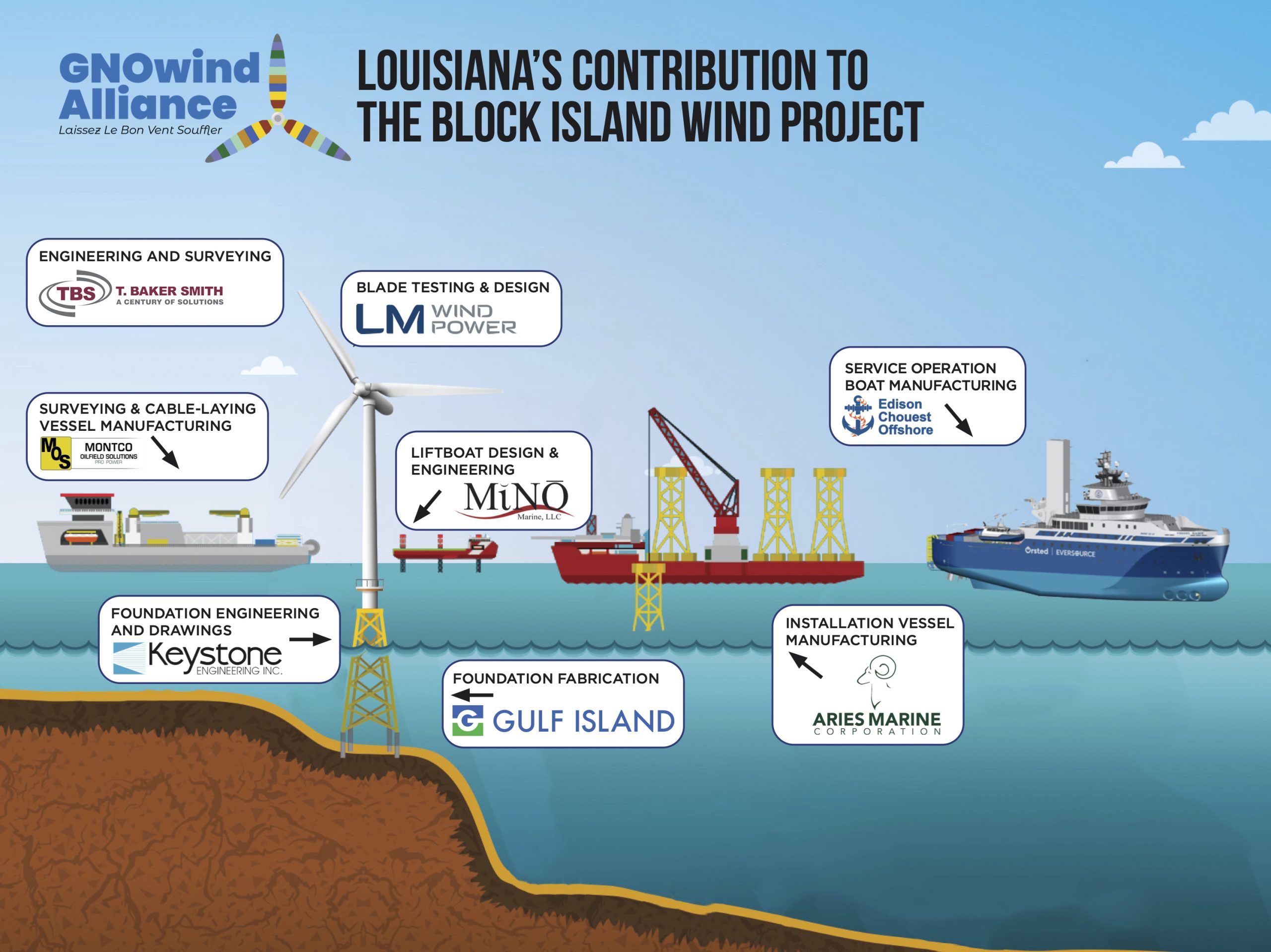Offshore Wind

An Opportunity for Louisiana
Greater New Orleans is the smart solution for the Offshore Wind industry. At the epicenter of the US offshore maritime sector, coastal Louisiana provides Off Shore Wind (OSW) manufacturers with a highly specialized workforce, superior assets, and competitive business environment.
Louisiana is uniquely poised to benefit, as the first Gulf state to assemble a task force around the industry, and as home to local companies with deep experience in designing, manufacturing, developing and servicing offshore projects. Long-standing oil and gas sector service providers are pivoting to become offshore wind industry leaders, as demonstrated by the Block Island Wind Farm project off the coast of Rhode Island, which utilized the work of eight Louisiana companies.
The Case for Offshore Wind
The biggest advantage for Louisiana is its offshore oil and gas supply chain. The state already has the expertise and infrastructure to build offshore wind turbines, including shipyards, offshore services, and ports.
The National Renewable Energy Laboratory (NREL) in a 2020 report ranked Louisiana fourth in state offshore technical wind potential. According to the NREL, the shallow waters of the Gulf of Mexico reduce the need for tall, expensive turbines or the necessity to construct floating turbines. Additionally, its warm temperatures and smaller wave heights are projected to make construction and maintenance easier and less expensive.
For Louisiana, a single 600-megawatt wind farm in the Gulf would produce an estimated 4,400 jobs and $445 million in economic output during the construction phase, according to NREL. Operations on one farm would contribute 150 new permanent jobs, along with an estimated $14 million annually.
By 2035, industry forecasts suggest U.S. offshore wind energy capacity could grow to 22 gigawatts through $70 billion of new capital investment in manufacturing and port infrastructure, as well as 45,000 new direct jobs. The Gulf of Mexico could produce 10% of U.S. wind energy, predicted by the National Renewable Energy Laboratory.
The development of wind energy in southeastern Louisiana will help support Louisiana’s growing reputation as a leader in environmental management. As well, wind is a natural extension of Louisiana’s energy industry and employs many of its existing peripheral sectors, like offshore marine services. Greater New Orleans is already home to critical players in the state’s transition to wind energy development. In fact, Avondale Global Gateway hosts the HQ for Gulf Wind Technology – America’s independent rotor technology specialists dedicated to improving the performance of operational wind farms. Additionally, Keystone Engineering – a St. Tammany-based firm – partnered with Bentley OpenWindPower Fixed Foundation to adapt steel jacket foundations used in the oil and gas industry as the design for deep-water wind turbine support structures.
Wind Farms
There are 71,328 existing wind turbines across the United States, both on land and offshore. There are currently only 2 offshore wind farms in the U.S. They are located in Block Island, Rhode Island (Block Island Wind Farm) and Norfolk/Hampton Roads, Virginia (Coastal Virginia Offshore Wind).
No wind farms currently exist in Louisiana.
Louisiana’s shallow continental shelf is ideal for next-generation wind turbines and farms, and our state boasts one of the nation’s largest shares of deployable offshore wind resources. The National Renewable Energy Laboratory [NREL] forecasts that a single Gulf of Mexico offshore wind project could support 4,470 jobs during construction and an ongoing 150 jobs filled by operational and maintenance labor.
The Science
Wind energy, or wind power, is electricity generated by turbines that convert the movement of wind. Wind turbines convert the kinetic energy of the moving wind into electrical energy.
The best way to think about a wind turbine is a reverse fan: rather than using electricity to make wind, these enormous fans use wind to make electricity. The wind turns the blades of the turbine, and the blades spin a shaft connected to a generator. Take a Look Inside a Wind Turbine to understand the mechanics, or view this Wind Turbine Animation. For more information, please explore “How Wind Turbines Work”.
Wind turbines – collectively a wind farm – can be installed onshore and offshore. There is generally more wind offshore, therefore offshore wind farms can often provide more energy.
In 2021, wind turbines were the source of about 2% of total U.S. utility-scale electricity generation. The total annual U.S. electricity generation from wind energy increased from about 6 billion kilowatt-hours (kWh) in 2000 to about 380 billion kWh in 2021. For reference, 1 billion kWh can power around 93,000 homes for a year.
Wind and solar energy resources can reliably integrate into a utility providers grid regardless of the variability of the resource. Grid operators have various tools to maintain the balance of electricity supply and demand, and grid operations are equipped to balance diverse resources, adjusting when necessary.
Facts & Figures



Join the GNOwind Alliance
Want to join the movement to create and grow the offshore wind energy industry in Greater New Orleans? Sign up to be a part of the GNO Wind Alliance by filling out the form below.

New Report: Louisiana Can Reap Job, Economic Benefits From Offshore Wind
Louisiana businesses and workers stand to benefit from the expansion of offshore wind.
Mailing List
Receive news and updates on new companies moving into Greater New Orleans, regional awards, and other information about how the local economy is growing.






